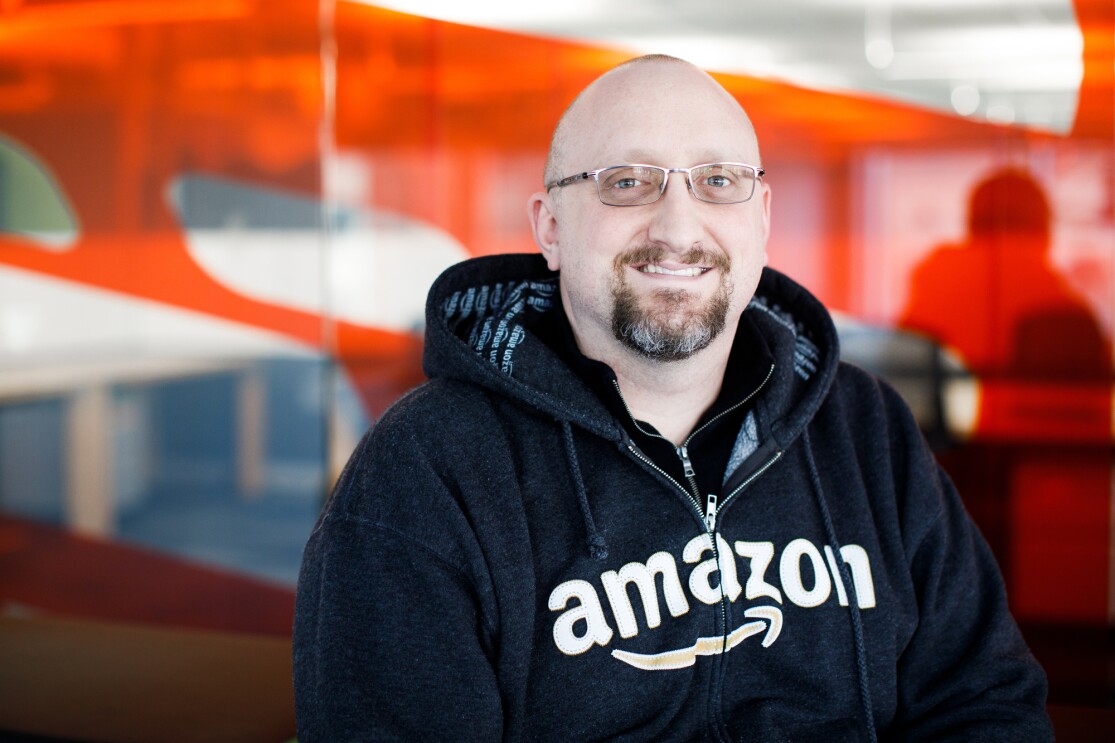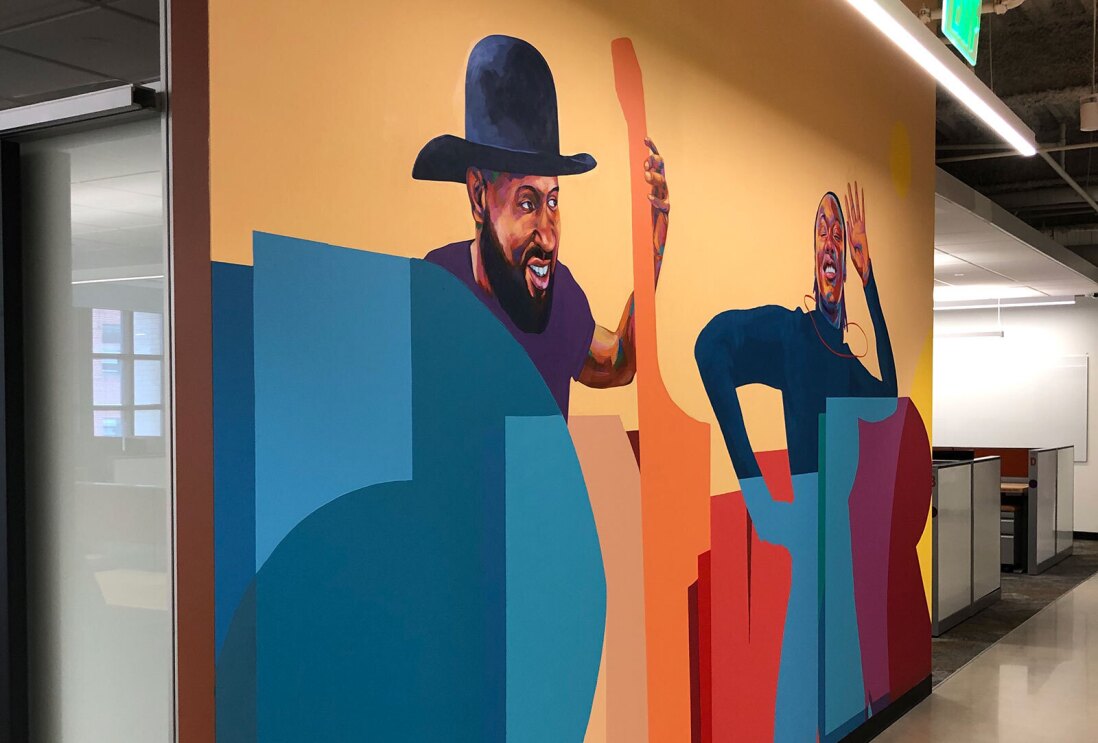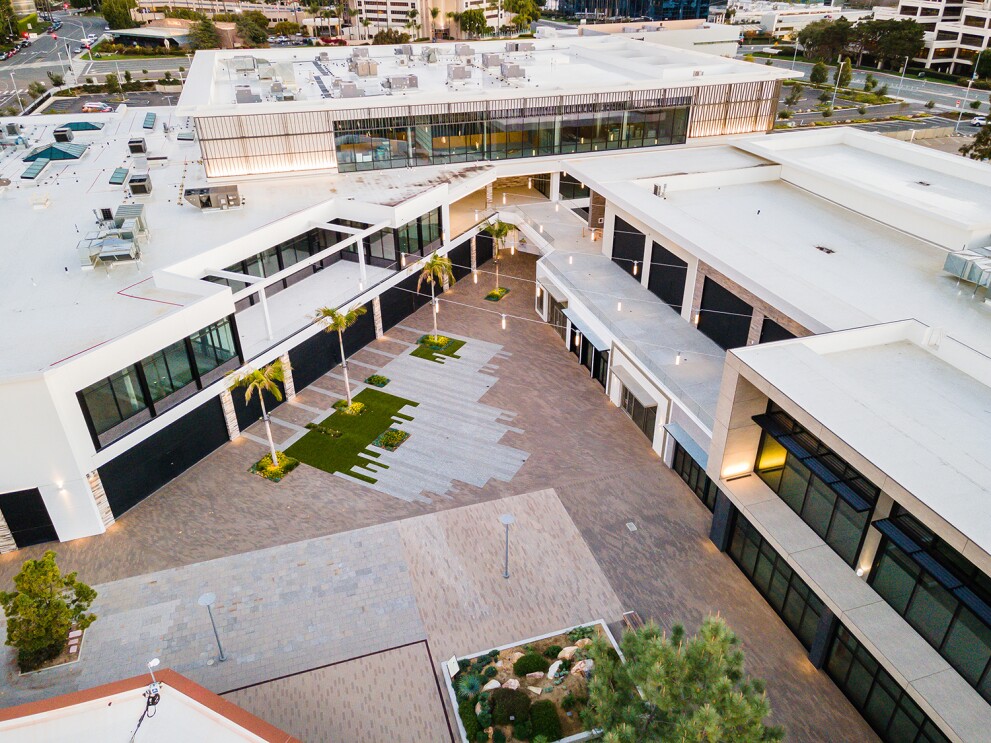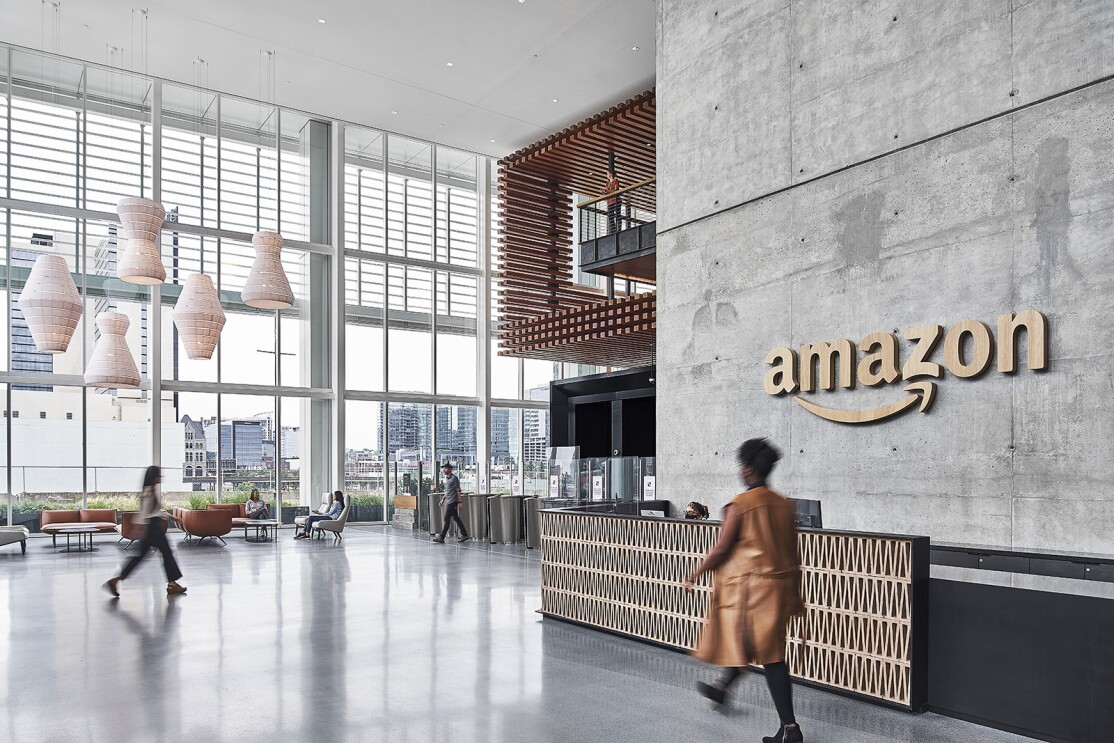A stone’s throw from Pittsburgh’s Monongahela River, on the second floor of a low-slung building, Amazon engineers are designing some of the world’s most advanced machine translation services.
01 / 05
PIT10, as it’s known within Amazon, is expanding. Construction crews are in the midst of more than doubling the space’s footprint. The office, in a building on a site that was once was part of the world’s largest steel mill, will soon be able to accommodate the steady stream of engineering talent, frequently from Carnegie Mellon University (CMU), flowing into Amazon’s Pittsburgh office.
In a twist of historical fate, the university that was founded by perhaps America’s greatest and most innovative steel baron, Andrew Carnegie, to serve the children of Pittsburgh’s blue-collar workforce is now turning out engineers who are revitalizing the Steel City. In the process, these engineers are helping Pittsburgh overcome its decades-long, post-industrial hangover and reforge the once-gritty city into a global innovation hub.
This story of the new Pittsburgh, the one built on silicon — the 21st century’s version of steel — is a story one hears often at PIT10.
It’s a story that in many ways is personified by Alon Lavie, a former CMU professor whose start-up was acquired by Amazon just over two years ago.
 Amazon's Alon LaviePhoto by JORDAN STEAD / Amazon
Amazon's Alon LaviePhoto by JORDAN STEAD / Amazon“All the big IT companies, and obviously Amazon, came here to leverage the talent coming out of CMU and the University of Pittsburgh,” says Lavie, a research team leader who works out of PIT10. “Pittsburgh doesn’t have the cachet of New York or San Francisco or Seattle. But it’s evolved. It’s a great place to raise a family, buy a house. And [working at Amazon] you get the resources to go out and solve some incredibly big problems.”
Lavie, originally from Israel, arrived in Pittsburgh in the late 1980s. After getting his Ph.D. in natural language processing at CMU, he stayed on to become a research professor, just as the Internet and later the data revolution were transforming his field.
Then, in 2009, along with a CMU colleague and a couple of their students, Lavie started Safaba, a start-up that used the compute power of the cloud to drive instantaneous, machine-driven translations. The name Safaba, Lavie says, is a play on the Hebrew word for “language”. Soon, companies with international clients – including Amazon – signed up.
“Amazon came along as a customer, loved what we were doing and had a vision of what we could do in-house,” said Lavie, whose only experience before Safaba was in academia. “For us, the scale of the opportunity inside Amazon and what we could do was incredibly appealing. The other part was Amazon said: we’d love to acquire you, but without you, the leaders, we don’t have the expertise to leverage it the right way. So six of us came on board.”
Two-plus years later, all but one of Lavie’s original Safaba team are still at Amazon.
 Bill Kaper, PIT10 site leaderPhoto by JORDAN STEAD / Amazon
Bill Kaper, PIT10 site leaderPhoto by JORDAN STEAD / AmazonAs Amazon has scaled up internationally, its need for machine-driven translation services has expanded exponentially. Today, Amazon’s machine-learning translations services are integrated across the company. Lavie’s group works alongside other engineers at PIT10 and with teams based in Seattle, Berlin, and Los Angeles, on technology that lets Amazon instantaneously translate words across over a dozen languages.
Amazon Translate, which AWS introduced last year at re:Invent, uses technology PIT10 engineers helped develop and implement. Kindle content, documentation and email translation services, Amazon’s international sites, and a host of other content in the consumer business all use translation services developed, in part, at PIT10.
Bill Kaper, Amazon’s Pittsburgh site leader, says machine-driven translation is still in the early days of its potential.
Kaper, a Pittsburgh native, chose to return home in 2015 when he heard the company was looking for a leader to open PIT10 and integrate Safaba with several other product teams.
01 / 04
“What we do here is a mix of research, pure engineering, back-end foundation services,” said Kaper. “Pittsburgh has been going through a technology renaissance for the past ten years, and CMU is a center of excellence for AI and machine-learning.”
Under Kaper, the translation services team in Pittsburgh has flourished. His team played a key role in the launch of Amazon.com in Spanish, a feature used by millions of Amazon.com customers.
According to Kaper, the translation services are already dramatically improving the customer experience.
A customer in the Czech Republic, for instance, can order something in Czech off of Amazon.de – Amazon’s website in German – and her search will instantaneously be translated into German (for Amazon.de to understand). The search results will then be translated from German into Czech (for the Czech customer to understand). Amazon’s translation services make these types of seamless transactions look easy.
What’s more, PIT10 and its expanding office is well positioned to help drive the machine-learning revolution forward.
“The dynamics of working on this kind of translation technology, and pushing solutions into production at scale, and watching the impact those solutions have on customers is something I’ve never experienced before,” said Lavie, comparing his time in academia with his tenure at Amazon. “What we’re doing at Amazon is not research in isolation. It’s about solving global scale types of language problems for global enterprises. Which is incredibly cool.”
Trending news and stories


















